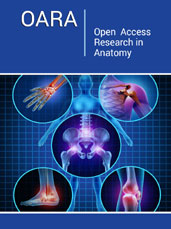- Submissions

Full Text
Open Access Research in Anatomy
Rope Therapy: An Innovative Approach for Supporting Children with Special Educational Needs
Adrian Low*
President of the Hong Kong Association of Psychology, Hong Kong
*Corresponding author: Adrian Low, PsyD, CPsychol, AFBPsS, President of the Hong Kong Association of Psychology, Hong Kong
Submission: November 19, 2024Published: December 12, 2024

ISSN: 2577-1922
Volume3 Issue1
Opinion
The COVID-19 pandemic has significantly impacted the lives of children with Special Educational Needs (SEN), leading to increased challenges in emotional regulation, concentration, and overall well-being. Traditional therapeutic and educational environments have been disrupted, necessitating alternative approaches to support these children and their families. Rope Therapy emerges as a promising intervention that combines physical activity with sensory integration techniques, aiming to enhance developmental outcomes for children with SEN.
Background
During lockdowns, children experienced reduced opportunities for physical activity and social interaction, resulting in heightened behavioral and emotional problems. Studies have shown that exercise is crucial for improving executive function, attention levels, and emotional stability in children. As families navigated the complexities of remote learning and heightened stress, there was a clear need for a structured, home-based therapy that could effectively engage children while fostering positive parent-child interactions.
What is rope therapy?
Rope Therapy integrates professional rope techniques with sensory integration training, focusing on enhancing vestibular sense, proprioception, muscle tension, and coordination. The therapy is designed to stimulate brain development and the secretion of neurotransmitters, which are essential for emotional and cognitive functioning. By utilizing ropes and related equipment, children engage in physical activities that are both therapeutic and enjoyable, promoting holistic development.
Implementation of home-based rope therapy
The Home-based Rope Therapy Program was initiated to empower parents to actively
participate in their children’s therapy. Over a 12-week period, parents received training to
implement the program at home, turning therapeutic sessions into engaging family activities.
Key components of the program included:
Structured training sessions: Each session involved 45 minutes of focused rope
exercises aimed at enhancing physical and emotional skills.
Parental involvement: Parents acted as facilitators, helping their children navigate the
therapy while strengthening their emotional bonds.
Key findings
Improvement in concentration and emotional regulation:
Research indicates that after the 12-week intervention, children
exhibited significant improvements in concentration and emotional
control. Parents reported:
a) Enhanced focus during tasks and online learning, with
children becoming more engaged in classroom activities.
b) A reduction in negative emotional expressions and
instances of physical aggression, as children learned to
articulate their feelings verbally. These changes reflect a deeper
emotional awareness and improved coping strategies among
children.
Positive impact on family dynamics: The program has also
contributed to enhanced family harmony. Parents noted:
a) Increased patience and understanding in their interactions
with their children.
b) A greater sense of joy and connection, as reflected in
the emotional responses of both parents and children during
therapy sessions. This collaborative approach not only benefits
the child but also strengthens the overall family unit, creating a
nurturing and supportive environment.
Insights on sleep quality: Interestingly, while children’s sleep quality did not show significant improvement, many parents reported better sleep patterns. This suggests that the physical activity involved in Rope Therapy may have a calming effect, contributing positively to parental well-being. Future studies should consider using objective measures, such as sleep trackers, to gain a clearer understanding of the therapy’s impact on sleep quality.
Limitations
Despite the positive outcomes, the study faced certain
limitations:
Observer bias: Given that parents were aware of the therapy’s
goals, their perceptions of their children’s progress could have been
influenced by expectations.
Sample size: With 69 participants completing the program, the
findings may not be generalizable. Larger studies are necessary to
validate these results and explore the broader applicability of Rope
Therapy.
Conclusion
Rope Therapy represents a promising intervention for children with special educational needs, particularly in the context of the challenges posed by the COVID-19 pandemic. By improving concentration, emotional regulation, and family dynamics, this innovative approach addresses both the physical and emotional needs of children while fostering positive interactions within families. As we move forward, further research is essential to explore the full potential of Rope Therapy and its long-term benefits for children with SEN. By continuing to develop and refine such programs, we can better support families in their efforts to provide effective and engaging therapeutic solutions for their children.
 a Creative Commons Attribution 4.0 International License. Based on a work at www.crimsonpublishers.com.
Best viewed in
a Creative Commons Attribution 4.0 International License. Based on a work at www.crimsonpublishers.com.
Best viewed in 







.jpg)






























 Editorial Board Registrations
Editorial Board Registrations Submit your Article
Submit your Article Refer a Friend
Refer a Friend Advertise With Us
Advertise With Us
.jpg)






.jpg)














.bmp)
.jpg)
.png)
.jpg)










.jpg)






.png)

.png)



.png)






